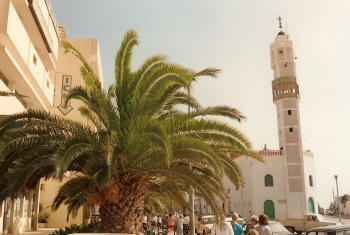Oasis de Gabes

Oasis de Gabes is part of the Tentative list of Tunisia in order to qualify for inclusion in the World Heritage List.
The Gabès Oasis is a coastal oasis important for trans-Saharan birds. Its date palm trees and fruit orchards provide a living to its inhabitants. An ancient and elaborate form of collective irrigation is used.
Map of Oasis de Gabes
Load mapThe coordinates shown for all tentative sites were produced as a community effort. They are not official and may change on inscription.
Community Reviews
Stanislaw Warwas

Visited December 2023
Gabès’s got the Palme d’or for being the most dirty and polluted city in Tunisia! And there’s nothing to add ☹ I am just wondering what the municipality of Gabès would do if one day its oasis is nominated for world heritage list… How they bring ICOMOS members to the oasis without showing them tons of plastic and any other kind of litter covering every sing square meter of the city and every second square meter of its oasis…
When you look at old maps and compare them with the new ones, you’ll see that most of the so unusual and unique (whatever is hidden behind ‘unique’ in this case) maritime oasis is long gone due to the development of chemical oriented industries; there are still some fields, let’s say, 200 m from the Mediterranean coast north of the city, but they do not seem too impressive. To lose yourself in the oasis itself, you should head to the west of the city, and the entrance and road (paved) that I took starts just at the main bus station – just ignore the garbage on both sides of the road and under your feet and walk. Walking is the best way to explore the site, you can follow the main road all the way to the zoo and then a pretty nice canyon of Ras el Oued )probably outside of the possible core zone), passing by small settlements, farms, shops and cafeterias (!), big mosque, association created to protect this oasis (closed), Roman bridge. You can also visit some of the farms where three levels of cultivated plants can be seen too: palm trees / fruit trees (most of them are pomegranate trees) / vegetables. The zoo is small but it is possible to see there local animals living in the oasis and a lion and a porcupine.
I walked all the way to the canyon; it is about 11 km one way. To come back to Gabès you can take a local bus or a louage from the village of Chenini (where the zoo is located), or you can hitch-hike like I did.
I did not note any special and unique values of this site, and the garbage all around is super-discouraging – it could be much nicer and more enjoyable walk. In the village of Chenini there are many informative boards “Do not litter”…
Community Likes
Site Info
- Full Name
- Oasis de Gabes
- Country
- Tunisia
- Added
- 2008
- Type
- Mixed
- Categories
- Cultural Landscape - Continuing Human activity - Agriculture
- Link
- By ID
Site History
2008 Added to Tentative List
Site Links
Visitors
33 Community Members have visited.